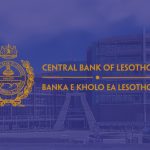
53rd COSSE Meeting, Thursday 22nd March 2018
March 22, 2018
Monetary Policy Committee (MPC) Statement of the 30th May, 2018
May 30, 2018In its 70th meeting held on the 3rd of April 2018, the Central Bank of Lesotho’s Monetary Policy Committee (MPC) considered global, regional, and domestic economic developments as well as financial markets conditions with a view to determine, and if necessary review, the adequacy of monetary targets to ensure macroeconomic stability.
Global economic growth continued to improve, with more countries registering accelerations in the fourth quarter of 2017 compared with the previous quarter. Among developed countries, economic growth accelerated in the Eurozone and the United Kingdom (UK) while it decelerated in the United States (US) and Japan. Inflationary pressures eased in February 2018 because of the decline in food prices in most advanced countries. Labour market conditions improved in line with growth. Monetary policy remained accommodative. However, monetary policy tightening has begun in the US as result of improved employment levels.
In emerging market economies, growth improved in India and remained unchanged in China. Inflationary pressures eased for most countries because of the decline in food prices. Consequently, monetary policy stance remained largely accommodative.
South Africa’s real GDP rose accelerated in the fourth quarter of 2017, supported mainly by increased production in the services, manufacturing and agriculture sectors. Growth outlook improved as a result of notable improvements in business and consumer confidence. Inflation eased in February 2018 mainly on account of the appreciation of the Rand against major currencies, and the decline in food and transport prices.
The domestic economy is estimated to have grown by 2.3 per cent in 2017. However, domestic economic performance had moderated in the fourth quarter of 2017, on account of low output by the mining, manufacturing and construction sectors. In the labour market, employment by LNDC assisted companies and Government as well as the number of Basotho migrant mineworkers continued to decline.
The year-on-year consumer inflation rate was 5.2 per cent in February 2018 compared with 5.7 per cent in December 2017. This reflected eased pressure from food, transport and communication components of inflation. If sustained, the appreciation of the rand against major currencies bodes well for Lesotho’s inflation outlook.
Money supply fell by 2.1 per cent in January 2018 compared with a rise of 3.7 per cent in December 2017. The decline in money supply was due to a fall in net domestic assets following a growth in government deposits that overshadowed an increase in net foreign assets. Credit to the private sector grew moderately by 1.9 per cent in January 2018 compared with 3.6 per cent in December 2017. This reflected improvement in credit extended to both households and business enterprises.
The external sector position deteriorated during the fourth quarter of 2017. The current account deficit widened to 6.5 per cent of GDP in the fourth quarter of 2017 from 3.9 per cent of GDP in the previous quarter. The deterioration in the current account was largely a result of the decline in exports and the increase in imports during the quarter. Official reserves fell from 4.3 months of import cover in September 2017 to 3.9 months of import cover in December 2017.
Government budgetary operations were estimated to have registered a deficit of 6.0 per cent of GDP in the quarter ending December 2017, compared with that of 6.4 per cent in the previous quarter. This was largely driven by a higher increase in revenue.
In conclusion, the Committee notes macroeconomic developments in developed and emerging market economies, which are likely to affect the domestic economy. Net International Reserves (NIR) continues to be at low levels mainly due to underperformance of government revenue and depletion of government deposits. This calls for urgent fiscal
consolidation.
Notwithstanding these developments, the Committee will continue to monitor developments that may impact on the NIR level and assures the stakeholders that the Bank will continue to hold sufficient reserves to underwrite the peg.
Having considered the above developments, the MPC decided to:
- Increase the NIR target floor from US$770 million to US$830 million.
- Cut the CBL Rate by 25 basis points from 7.00 per cent to 6.75 per cent per annum.
A.R. Matlanyane (PhD)
GOVERNOR
Contact Person:
Ephraim Moremoholo
+266 22232094
emoremoholo@centralbank.org.ls

